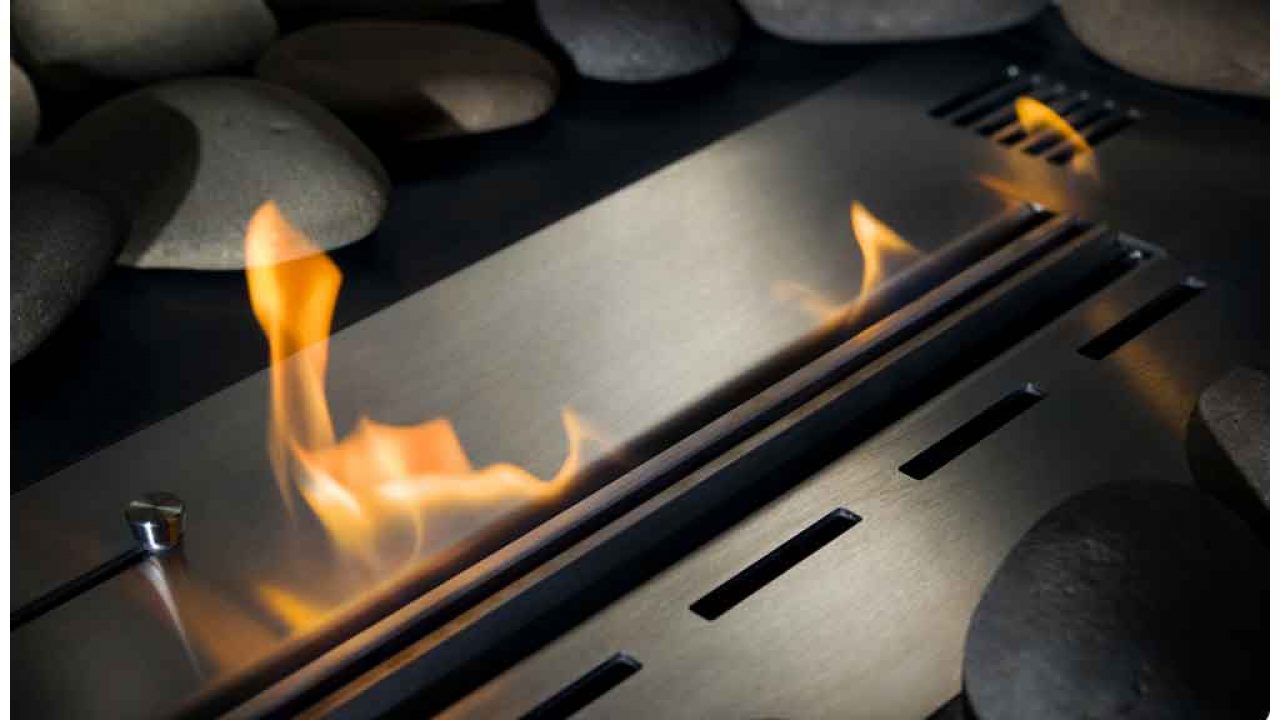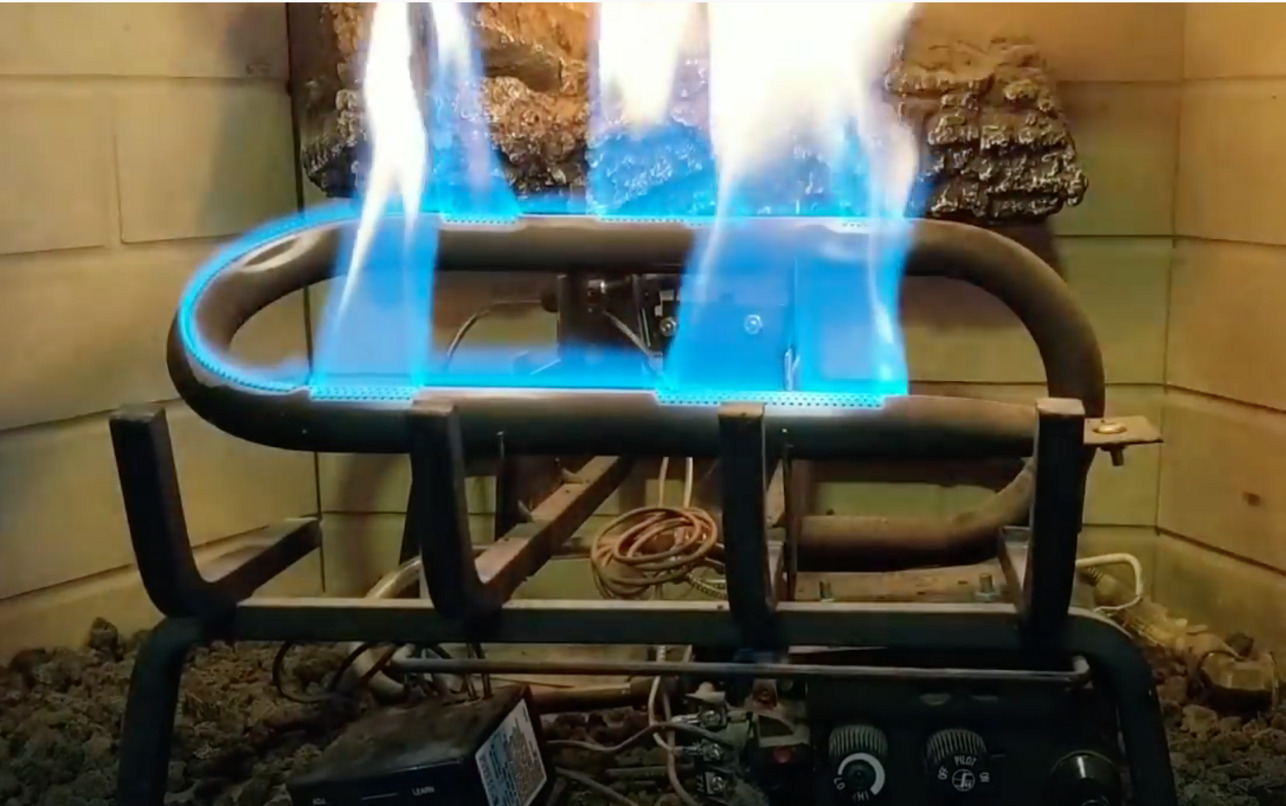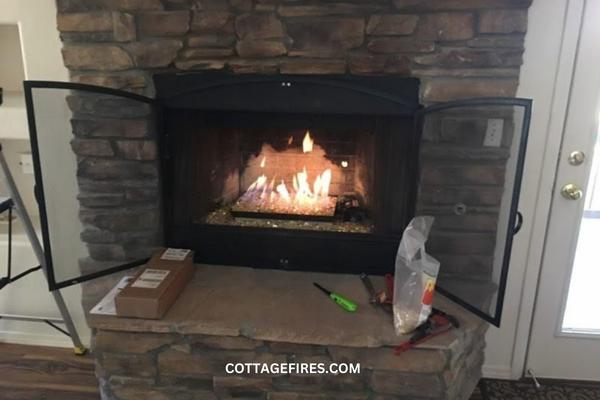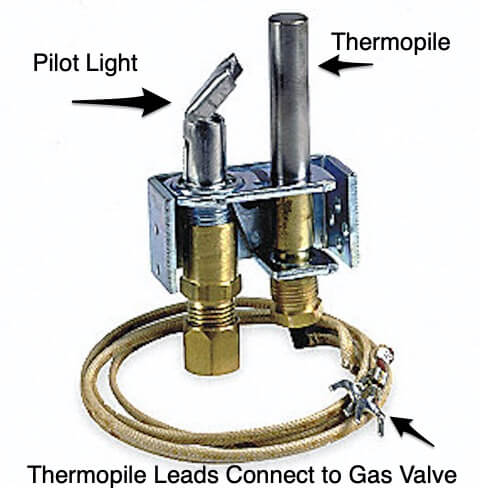The Basics of Gas Fireplaces
Gas fireplaces are a popular and convenient alternative to traditional wood-burning fireplaces. They offer the warmth and ambiance of a real fire without the need for chopping wood, cleaning ash, or dealing with smoke. Instead, gas fireplaces operate by burning natural gas or propane to produce heat and flames, which can be adjusted with a thermostat or remote control.
There are several types of gas fireplaces, including direct vent, ventless, and insert models. Direct vent fireplaces draw air from outside the home and expel exhaust gases through a dedicated vent system. Ventless fireplaces, on the other hand, are designed to operate safely within the home without a vent, using the air in the room for combustion and releasing minimal emissions. Gas fireplace inserts are designed to fit into an existing fireplace opening, converting it from wood-burning to gas.
The convenience and efficiency of gas fireplaces make them an attractive option for many homeowners. They can be turned on and off with the flick of a switch or the push of a button, providing instant heat without the hassle of building a fire. Additionally, gas fireplaces can be more energy-efficient than wood-burning models, as they can be thermostatically controlled and do not lose heat up the chimney.

Gas fireplaces are generally safe and easy to use, but like any appliance, they require proper maintenance and occasional troubleshooting. One common issue that homeowners may encounter is the pilot light going out. The pilot light is a small, continuously burning flame that ignites the main burner when the fireplace is turned on. If the pilot light goes out, the fireplace will not operate.
There are several reasons why a gas fireplace pilot light may go out, including issues with the gas supply, thermocouple, pilot assembly, or venting. Understanding the basics of gas fireplaces and how they operate can help homeowners diagnose and resolve issues with the pilot light, ensuring that their fireplace remains a reliable source of heat and enjoyment.
Proper maintenance and care are essential for the safe and efficient operation of a gas fireplace. This includes regular cleaning, inspection of components, and addressing any issues promptly. By understanding the basics of gas fireplaces and taking proactive steps to maintain them, homeowners can enjoy the warmth and ambiance of their fireplace for years to come.

Common Causes of a Pilot Light Going Out
Several factors can cause a gas fireplace pilot light to go out, disrupting the operation of the fireplace. Understanding these common causes can help homeowners troubleshoot and address the issue effectively.
One common cause of a pilot light going out is a problem with the gas supply. If there is a disruption in the gas supply, such as a closed gas valve or a gas line issue, the pilot light may not receive the necessary fuel to stay lit. Checking the gas valve to ensure it is open and verifying that there are no leaks or issues with the gas line can help resolve this problem.
Another potential cause is a dirty or clogged pilot assembly. Over time, dust, dirt, and debris can accumulate in the pilot assembly, obstructing the flow of gas to the pilot light. Cleaning the pilot assembly with a brush or compressed air can remove these obstructions and restore proper function. It is important to turn off the gas supply before attempting to clean the pilot assembly to ensure safety.

The thermocouple, a safety device that detects whether the pilot light is lit and shuts off the gas supply if it is not, can also be a culprit. If the thermocouple is faulty or improperly positioned, it may not detect the pilot light correctly, causing it to go out. Inspecting the thermocouple for signs of damage and ensuring it is properly aligned with the pilot flame can help address this issue. Replacing a faulty thermocouple may be necessary in some cases.
Venting issues can also cause a pilot light to go out. Proper ventilation is essential for the safe operation of a gas fireplace, as it allows for the proper combustion of gas and the expulsion of exhaust gases. If the venting system is blocked or improperly installed, it can disrupt the flow of air and gas, causing the pilot light to go out. Checking the venting system for obstructions and ensuring it is properly installed and maintained can help resolve this problem.
Finally, drafts and air currents in the room can extinguish the pilot light. Factors such as open windows, doors, or even strong air conditioning or heating vents can create drafts that disrupt the pilot flame. Identifying and eliminating sources of drafts in the room can help keep the pilot light lit. Additionally, ensuring that the fireplace is properly sealed and insulated can help prevent drafts from affecting the pilot light.
By understanding the common causes of a pilot light going out, homeowners can take proactive steps to troubleshoot and resolve the issue. Regular maintenance and inspection of the gas fireplace components can help prevent problems with the pilot light and ensure the safe and efficient operation of the fireplace.

Interesting Articles You May Want to Check:
- Fireplace Gas Valve Extension
- Fireplace Gas Valve Flange Extension
- Free Standing Gas Fireplace Prices
- Ventless Natural Gas Fireplace Wall Mount
- Gas Fireplace Burner Replacement

Troubleshooting a Gas Fireplace Pilot Light
When a gas fireplace pilot light goes out, troubleshooting the issue can help identify the cause and determine the appropriate solution. Here are some steps to follow when troubleshooting a gas fireplace pilot light.
First, check the gas supply. Ensure that the gas valve is fully open and that there are no issues with the gas line. If the gas supply is disrupted, the pilot light will not receive the necessary fuel to stay lit. If you suspect a problem with the gas line, contact a professional to inspect and repair it.
Next, inspect the pilot assembly for dirt and debris. Over time, dust and debris can accumulate in the pilot assembly, obstructing the flow of gas to the pilot light. Turn off the gas supply and use a brush or compressed air to clean the pilot assembly. Be careful not to damage any components during the cleaning process.
Check the thermocouple for signs of damage or misalignment. The thermocouple is a safety device that detects whether the pilot light is lit and shuts off the gas supply if it is not. If the thermocouple is faulty or not properly aligned with the pilot flame, it may cause the pilot light to go out. Inspect the thermocouple and ensure it is properly positioned. If the thermocouple is damaged, it may need to be replaced.

Examine the venting system for obstructions or improper installation. Proper ventilation is essential for the safe operation of a gas fireplace. If the venting system is blocked or improperly installed, it can disrupt the flow of air and gas, causing the pilot light to go out. Check the venting system for any obstructions and ensure it is properly installed and maintained.
Identify and eliminate sources of drafts in the room. Drafts and air currents can extinguish the pilot light. Factors such as open windows, doors, or strong air conditioning or heating vents can create drafts that disrupt the pilot flame. Identifying and eliminating sources of drafts can help keep the pilot light lit. Additionally, ensuring that the fireplace is properly sealed and insulated can help prevent drafts from affecting the pilot light.
If the pilot light continues to go out despite following these troubleshooting steps, it may be necessary to contact a professional for further inspection and repair. A professional technician can diagnose the issue and perform any necessary repairs to ensure the safe and efficient operation of the gas fireplace.
Troubleshooting a gas fireplace pilot light involves checking the gas supply, cleaning the pilot assembly, inspecting the thermocouple, examining the venting system, and addressing drafts in the room. By following these steps, homeowners can identify and resolve common issues that cause the pilot light to go out, ensuring the continued operation of their gas fireplace.

Maintenance Tips for Gas Fireplaces
Proper maintenance is essential for the safe and efficient operation of a gas fireplace. Regular cleaning, inspection, and servicing can help prevent issues with the pilot light and other components, ensuring that the fireplace remains a reliable source of heat and enjoyment.
One important maintenance task is regular cleaning of the fireplace and its components. Dust, dirt, and debris can accumulate in the pilot assembly, burner, and other parts of the fireplace, obstructing the flow of gas and air. Cleaning these components with a brush or compressed air can help maintain proper function. It is important to turn off the gas supply before cleaning to ensure safety.
Inspection of the thermocouple and other safety devices is also crucial. The thermocouple detects whether the pilot light is lit and shuts off the gas supply if it is not. Regularly inspecting the thermocouple for signs of damage or misalignment and ensuring it is properly positioned can help prevent issues with the pilot light. Replacing a faulty thermocouple may be necessary to ensure the safe operation of the fireplace.
The venting system should be inspected and maintained regularly. Proper ventilation is essential for the safe operation of a gas fireplace, as it allows for the proper combustion of gas and the expulsion of exhaust gases. Checking the venting system for obstructions, ensuring it is properly installed, and performing any necessary maintenance can help prevent issues with the pilot light and other components.
Regular servicing by a professional technician is recommended to ensure the safe and efficient operation of a gas fireplace. A professional can perform a thorough inspection, cleaning, and servicing of the fireplace, identifying and addressing any potential issues before they become major problems. Regular servicing can help extend the lifespan of the fireplace and ensure that it operates safely and efficiently.
In addition to regular cleaning and inspection, it is important to follow the manufacturer’s recommendations for maintenance and care. This includes using the recommended cleaning products and methods, performing any necessary maintenance tasks, and scheduling regular servicing by a professional. Following the manufacturer’s guidelines can help ensure the safe and efficient operation of the gas fireplace.
Proper maintenance and care are essential for the safe and efficient operation of a gas fireplace. Regular cleaning, inspection, and servicing can help prevent issues with the pilot light and other components, ensuring that the fireplace remains a reliable source of heat and enjoyment. By following these maintenance tips and the manufacturer’s recommendations, homeowners can keep their gas fireplace in good working condition and enjoy its warmth and ambiance for years to come.

When to Call a Professional
While many issues with a gas fireplace pilot light can be resolved with basic troubleshooting and maintenance, there are times when it is necessary to call a professional for assistance. Understanding when to seek professional help can ensure that the fireplace is repaired safely and effectively.
If you have followed troubleshooting steps and the pilot light continues to go out, it may be time to contact a professional. Persistent issues with the pilot light can indicate a more serious problem with the gas fireplace that requires expert diagnosis and repair. A professional technician can perform a thorough inspection, identify the underlying cause of the issue, and perform any necessary repairs or replacements.
If you suspect a problem with the gas supply or gas line, it is important to call a professional. Issues with the gas supply can be dangerous and should be addressed by a qualified technician. A professional can inspect the gas line for leaks, obstructions, or other issues and ensure that the gas supply is functioning properly.
When dealing with complex issues such as faulty thermocouples, malfunctioning pilot assemblies, or venting problems, a professional should be consulted. These components require specialized knowledge and tools to diagnose and repair correctly. A professional technician can ensure that these components are repaired or replaced safely and following industry standards.
If you are unsure about performing maintenance tasks or repairs on your gas fireplace, it is always best to seek professional assistance. Gas fireplaces can be complex appliances, and attempting to perform repairs or maintenance without proper knowledge and experience can lead to safety hazards or further damage. A professional technician can provide expert guidance and ensure that the fireplace is repaired and maintained correctly.
Regular servicing by a professional is also recommended to ensure the safe and efficient operation of the gas fireplace. A professional technician can perform routine inspections, cleaning, and servicing to keep the fireplace in good working condition and address any potential issues before they become major problems.
Knowing when to call a professional for a gas fireplace pilot light issue involves recognizing persistent problems, dealing with gas supply issues, addressing complex component malfunctions, and seeking expert guidance when needed. By consulting a professional technician when necessary, homeowners can ensure the safe and effective repair and maintenance of their gas fireplace.

Common Mistakes to Avoid with Gas Fireplace Pilot Lights
When dealing with gas fireplace pilot lights, avoiding common mistakes can help ensure the safe and effective operation of the fireplace. Here are some common mistakes to avoid:
Ignoring Gas Supply Issues: One of the most common mistakes is neglecting to check the gas supply when the pilot light goes out. Issues such as closed gas valves or gas line problems can prevent the pilot light from staying lit. Always ensure that the gas valve is fully open and that there are no issues with the gas line before troubleshooting other components.
Using Incorrect Cleaning Methods: Using harsh chemicals or abrasive cleaning tools can damage the pilot assembly and other components of the gas fireplace. It is important to use the recommended cleaning products and methods to avoid causing damage. Always turn off the gas supply before cleaning and follow the manufacturer’s instructions for cleaning the fireplace.
Neglecting Thermocouple Maintenance: Failing to inspect and maintain the thermocouple can lead to issues with the pilot light. The thermocouple is a critical safety device that detects whether the pilot light is lit. If it is faulty or misaligned, it may cause the pilot light to go out. Regularly inspect the thermocouple and ensure it is properly positioned and functioning.
Overlooking Venting Issues: Proper ventilation is essential for the safe operation of a gas fireplace. Blocked or improperly installed venting can disrupt the flow of air and gas, causing the pilot light to go out. Regularly inspect the venting system for obstructions and ensure it is properly installed and maintained to prevent issues with the pilot light.
Ignoring Drafts and Air Currents: Drafts and air currents in the room can extinguish the pilot light. Common sources of drafts include open windows, doors, and strong air conditioning or heating vents. Identify and eliminate sources of drafts to keep the pilot light lit. Additionally, ensure that the fireplace is properly sealed and insulated to prevent drafts from affecting the pilot light.
Attempting Complex Repairs Without Professional Help: Gas fireplaces can be complex appliances, and attempting to perform complex repairs without proper knowledge and experience can lead to safety hazards or further damage. When dealing with issues such as faulty thermocouples, malfunctioning pilot assemblies, or gas line problems, it is best to consult a professional technician for assistance.

What should I do if the pilot light on my gas fireplace keeps going out?
If the pilot light on your gas fireplace keeps going out, start by checking the gas supply to ensure that the gas valve is fully open and there are no issues with the gas line. Inspect the pilot assembly for dirt or debris and clean it if necessary. Check the thermocouple to ensure it is properly aligned and functioning. Examine the venting system for obstructions and ensure it is properly installed. If the pilot light continues to go out despite these steps, it may be necessary to consult a professional technician for further diagnosis and repair.
Can I clean the pilot assembly myself?
Yes, you can clean the pilot assembly yourself, but it is important to follow safety precautions. Turn off the gas supply before attempting to clean the pilot assembly. Use a brush or compressed air to remove dust and debris from the pilot assembly. Avoid using harsh chemicals or abrasive cleaning tools that could damage the components. If you are unsure about cleaning the pilot assembly or if it does not resolve the issue, consider seeking professional assistance.
How often should I have my gas fireplace serviced?
It is recommended to have your gas fireplace serviced by a professional at least once a year. Regular servicing ensures that the fireplace is operating safely and efficiently. A professional technician can perform a thorough inspection, cleaning, and servicing of the fireplace, addressing any potential issues before they become major problems. Regular servicing can help extend the lifespan of the fireplace and ensure its continued safe operation.
What causes drafts that affect the pilot light?
Drafts that affect the pilot light can be caused by factors such as open windows, doors, or strong air conditioning or heating vents. These drafts can disrupt the flow of air around the pilot light, causing it to go out. To prevent drafts from affecting the pilot light, identify and eliminate sources of drafts in the room. Ensure that the fireplace is properly sealed and insulated to prevent drafts from impacting the pilot light.
Can a faulty thermocouple be repaired or does it need to be replaced?
A faulty thermocouple typically needs to be replaced rather than repaired. The thermocouple is a critical safety device that detects whether the pilot light is lit and shuts off the gas supply if it is not. If the thermocouple is damaged or not functioning properly, it is usually best to replace it with a new one. A professional technician can perform this replacement and ensure that the new thermocouple is properly installed and aligned.
Are ventless gas fireplaces more prone to pilot light issues compared to direct vent fireplaces?
Ventless gas fireplaces are not necessarily more prone to pilot light issues compared to direct vent fireplaces, but they operate differently. Ventless fireplaces rely on the air in the room for combustion and release minimal emissions, which can sometimes lead to higher levels of soot and debris that may affect the pilot light. Proper maintenance and regular cleaning of the pilot assembly and other components are important for both ventless and direct vent fireplaces to prevent pilot light issues and ensure safe operation.

Related Posts: